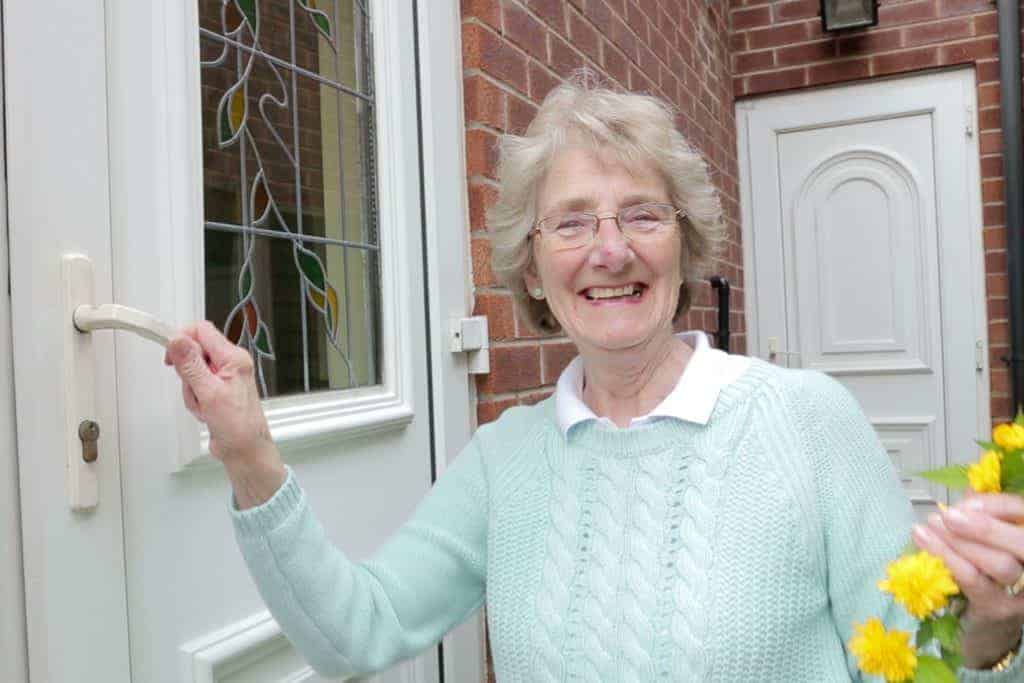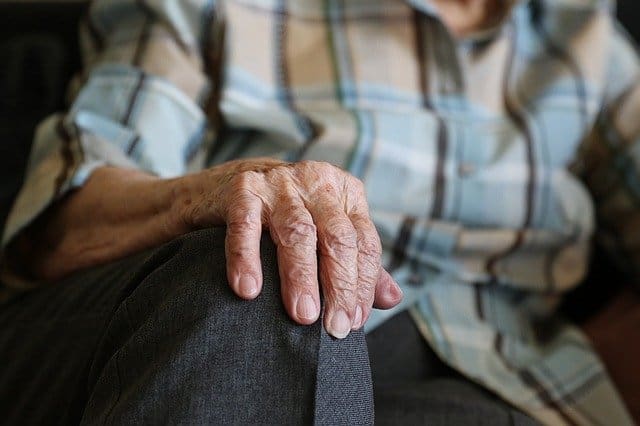Dr. Freddy Gathorne-Hardy, a founder member of the non-profit organisation The Live-in Care Hub, expands further on why the focus on care homes as the main or only option for elderly care has caused, and continues to cause, unnecessary loss of life.
With lives at stake in care homes due to COVID-19 it’s time for a drastic rethink of the UK’s care system
A shocking difference between the numbers of COVID-19 related deaths in care homes compared to those having professional care in their own homes suggests we rethink the whole future of elderly care in the UK. With elderly people clearly safer at home why are care homes still viewed as a “good choice” by healthcare and social care professionals?
“It shouldn’t be a choice between which care home is least likely to result in premature death. People deserve another option that promotes and delivers quality of life.”
The COVID-19 pandemic, which has beset the nation since the spring of 2020, has yet to loosen its grip. The measures being taken to protect the most vulnerable in our society, such as the elderly, have had a profound effect too. Distressing statistics have led us to reflect on how safe our elderly people in care homes really are both during a pandemic and in normal times.
According to a joint study by the Office of National Statistics and the Care Quality Commission, deaths in care homes involving COVID-19 reached a heart-breaking 14,428 on 9th October 2020. In addition to this, stopping care home visits from relatives and friends has had a greater impact on mental well-being than many of us would have imagined.
This raises the debate once more about how safe are care homes for those in need of care in later life; and what alternatives are there to protect not only the physical health but also the quality of life of our elderly population?

How Safe Are Care Homes?
According to the latest ONS statistics, 29.3% of deaths of care home residents in England between 2nd March and 12th June 2020 involved COVID-19. Welsh care homes recorded 822.3 deaths per 100,000 care home residents, in comparison to England’s 1182.9 per 100,000.
There are several reasons why care homes suffered so severely in the early part of the pandemic. Some patients were sent to care homes from hospital with COVID but the home was not notified. Add to that the fact that care home residents live in close proximity, share carers and other staff, and all these factors led to a high rate of cross-contamination and infection.
The table below represents the figures from just four weeks in the last report of its kind published by PHE for the week ending 2nd October 2020. As you can see, care homes are second only to educational settings, where social distancing is difficult and children less at risk, in cases recorded during this period.
It is not known how many of these cases led to long-term detrimental health effects, or how many deaths. The columns show the cumulative number of incidents by institution over the past 4 weeks with total number in the last week in brackets.
| PHE Centres | Care home | Hospital | Educational settings | Prisons | Workplace settings | Food outlet/restaurant settings | Other settings | Total |
|---|---|---|---|---|---|---|---|---|
| East of England | 58(13) | 6(3) | 40(10) | 0(0) | 29(13) | 5(4) | 8(2) | 146(45) |
| East Midlands | 102(19) | 8(5) | 62(14) | 2(2) | 40(17) | 10(1) | 13(3) | 237(61) |
| London | 36(7) | 18(20 | 158(89) | 1(0) | 58(21) | 10(3) | 22(7) | 303(129) |
| North East | 46(14) | 2(0) | 32(14) | 1(0) | 21(3) | 10(0) | 21(7) | 133(38) |
| North West | 76(11) | 12(5) | 159(41) | 3(0) | 144(73) | 41(11) | 63(32) | 498(173) |
| South East | 102(26) | 16(7) | 49(14) | 2(1) | 21(5) | 12(1) | 19(4) | 221(58) |
| South West | 97(17) | 2(1) | 90(16) | 1(0) | 34(11) | 7(2) | 13(4) | 244(51) |
| West Midlands | 106(24) | 21(3) | 176(70) | 0(0) | 78(35) | 20(6) | 29(8) | 430(146) |
| Yorkshire and Humber | 97(12) | 4(1) | 87(28) | 4(0) | 78(26) | 12(5) | 35(9) | 317(81) |
| Total | 720(143) | 89(27) | 853(296) | 14(3) | 503(204) | 127(33) | 223(76) | 2529(782) |
The infection and fatality figures are devastating. Behind these numbers are real people and their families. The situation was, and still is in some cases, that relatives were not allowed to be with their loved one as they passed away. And funerals offered little opportunity to begin a healthy grieving process. As well as limiting numbers, relatives and friends were not allowed to hold or comfort each other.
The results are as heart-breaking for families as for care home staff themselves. Lack of testing facilities for residents and staff is also thought to be a direct contributory factor to the high infection and death rates witnessed in recent months from COVID-19 in care homes across the country.
There is a Safer Option Than a Care Home
Live-in care is a lesser known option in the UK (although much more common across other European countries) where a professional carer lives in the home of the elderly person around the clock, 7 days a week.
In a recent survey by the Live-in Care Hub, those organisations polled provide live-in care for a total of 2,926 elderly people. During the first wave of the virus, only 10 elderly people tested positive for coronavirus from that total and only 10 live-in carers tested positive – and these cases are not directly related. Of these only 5 elderly people died from COVID-19 or a related illness. This represents 0.17% of those receiving professional care in their own homes have dies due to COVID-19, which, compared to the 29.3% recorded in care home settings, is a sobering statistic.
“Just 0.17% of old people receiving professional care in their own homes have died from COVID-19 compared to 29.3% of old people in care homes”
With a high standard of skilled care, along with care dedicated solely to the elderly person, they are clearly safer in their own homes, even with a global pandemic on the doorstep. Live-in care has continued safely throughout the pandemic and lockdown – and it will continue to do so during local restrictions or ‘circuit breaks’.
With none of the worries about greater risk of infection, hospital discharge departments could discharge patients back to their own homes into the care of a skilled professional rather than placing people in care homes, especially for limited periods of rehabilitation.
Elderly people and their families should question any attempt at discharge to a care home, particularly for people who have previously been living at home. Discuss the alternative option of live-in care with healthcare and social care professionals, who are now well-aware of the devastating impact of automatic discharge to care homes during the pandemic.
It’s Not Just Life; It’s Quality of Life Too

The huge difference between outcomes with both types of care has led to many questions being raised by concerned families. One of these is how the quality of life of our elderly people has suffered due to the pandemic. While we know that older people have suffered from significantly reduced social interaction as a result of lockdown, there are many heart-breaking stories of isolation within care homes where lack of social interaction should not have been an issue, in theory. Stories of residents being kept in their room for weeks at a time at the height of the first wave of the corona virus show how the ‘rules’ were enforced with such vigour in some care homes, that charities and organisations are investigating claims of human rights abuse of the elderly.
Of course, many care home assistants tried their very best to reduce the impact of social isolation and risk of harm in their elderly residents. However, the live-in care approach had no such issues with social isolation since live-in carers automatically provide companionship and, hence, a better quality of life.
Care Homes Are Not Right For Everyone
The general assumption here in the UK is that care homes will offer the best solution for older people requiring care. Company, socialisation and carers on duty 24 hours a day are often proclaimed as being the reasons why.
And yet, despite the best efforts of staff, older people living in care and nursing homes were at the mercy of COVID-19. The high number of deaths recorded paint a devastatingly poor picture of the care home landscape in the UK.
And it wasn’t just the coronavirus that was the issue. The almost-draconian rules that prevented residents from seeing their family cut them off from everything familiar. Even for the most resilient, such isolation has been challenging.
Even before the corona virus pandemic there was growing awareness that care homes are not the best answer. The care home population in the UK has remained stable since 2001, despite an ageing population, suggesting people are seeking better alternatives.

Why Risk Lives When an Alternative Exists?
Of the live-in care providers polled in the recent survey, almost a quarter said that the one thing the government could do to help make live-in care a real option for elderly people is to provide funding in the same way as it does for care home places, and to help promote live in care as a viable alternative. Hospital discharge departments, GPs and social services have it within their power to improve outcomes and quality of life for our elderly population. What are they waiting for?
Live-in care has shown time and again that it is beneficial from both a physical and mental well-being perspective. It allows people to stay in the comfort of their own home, amongst their own possessions and memories, but yet receive comfort, companionship and professional care as they need it.
From a financial view point, live-in care is affordable and, in many cases, is cheaper than living in a care home. If a live-in carer, for example, lives with a couple, the cost is the same as caring for one person. In a care home, both would pay the costs.
More than 50% of people in care homes receive some funding from the UK Government, but only 6% of live-in care fees receive contributions from the Government. What this effectively means is that people are pushed towards care homes regardless of their financial situation. So if finances are not a stumbling block then a rethink of elderly care policy is long overdue.
“…a rethink of elderly care policy is long overdue.”
Live-In Care Is Right for Everyone
Live-in carers are skilled, committed and highly valued people; they are well-paid for the round the clock care they provide meaning families are safe in the knowledge that dedicated, individual and high-quality care is being provided.
The dignity and genuine care that a live-in carer provides is something that all of us would want for ourselves, our ageing parents or relatives.
It’s clear that the corona virus pandemic has shone an unfavourable light on the elderly care system in the UK but the distressing figures about COVID-19 deaths in care homes could be just the impetus the country needs to effect change. Live-in care is already a well-established, well-respected form of care, albeit lesser known. However, it is the perfect solution to ensure everyone who wants high-quality care can access and afford it. Referrals for care by GPs, hospitals and local authorities don’t often give live in care a mention as a referral choice, but it is time that they did because live-in care is right for everyone.

Final Thoughts…
It’s time to level the playing field for all old people here in the UK.
It’s time to realise the genuine benefits of live-in care for everyone that requires care, to ensure that every elderly person can access safe, effective care, that not only protects their life, but ensures that the quality of life they enjoy in their later years is as good as possible – even during a pandemic.
Professional live-in care has continued to provide it’s usual high-quality care during the pandemic and will continue to do so. Live-in carers have proved an invaluable source of care during the public health crisis, keeping their elderly clients safe and well. With an existing, well-established alternative to care homes already existing in the UK now is the time for a serious review and overhaul of the default care option offered to those that require care, especially since COVID-19 is thought to be part of a pattern of pandemics that are set to increase in frequency in the coming years. Why put your life at risk unnecessarily?
